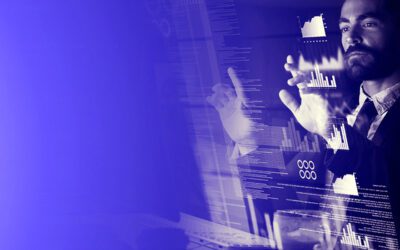Artificial intelligence (AI) is rapidly transforming the cybersecurity landscape, promising a future of automated threat detection, predictive analysis, and lightning-fast incident response. But while the potential benefits seem limitless, we must also acknowledge the hidden risks lurking within this powerful technology.
The Rise of the AI Defender: A Boon for Cybersecurity?
There’s no denying the transformative impact AI is having on cybersecurity. AI algorithms can:
- Analyze vast amounts of data at incredible speeds, identifying subtle anomalies and patterns that might escape human analysts.
- Learn and adapt in real-time, proactively predicting and mitigating emerging threats before they materialize.
- Automate repetitive tasks, freeing up security professionals to focus on more strategic initiatives.
These capabilities translate into real-world benefits:
- Reduced detection times: AI can identify and respond to threats in seconds, minimizing the window of vulnerability.
- Improved accuracy: AI models can analyze complex data sets with a level of precision impossible for humans, leading to fewer false positives and negatives.
- Enhanced efficiency: Automating routine tasks allows security teams to focus on high-value activities like threat hunting and incident investigation.
However, before we fully embrace the AI savior narrative, it’s crucial to examine the potential downsides.
The Dark Side of AI: Unforeseen Risks and Ethical Quandaries
While AI’s potential for good is undeniable, several risks associated with its implementation in cybersecurity demand careful consideration:
- Algorithmic Bias: AI models are trained on data sets, and these data sets can unconsciously reflect existing societal biases. This can lead to discriminatory outcomes, where AI-powered security tools flag certain individuals or groups more frequently based on factors like race, gender, or location.
- Black Box Effect: Many AI models operate as “black boxes,” meaning their decision-making processes are opaque and difficult to understand. This lack of transparency can make it challenging to identify and address potential vulnerabilities or biases within the system.
- Vulnerability to Manipulation: Adversaries can potentially exploit vulnerabilities in AI models to launch targeted attacks or manipulate their output to gain access to sensitive data or systems.
- Job Displacement: As AI automates various cybersecurity tasks, concerns arise about potential job displacement for security professionals. While new roles and skillsets will undoubtedly emerge, managing this transition responsibly is crucial.
- Ethical Considerations: The use of AI in cybersecurity raises complex ethical questions around data privacy, individual profiling, and the potential for automated decision-making with real-world consequences. Establishing clear ethical frameworks and ensuring transparency in AI development are essential.
Striking the Right Balance: Humans and AI, Stronger Together
The potential risks associated with AI should not deter us from exploring its power to enhance cybersecurity. However, navigating these risks requires a conscious and responsible approach:
- Human oversight: AI should always be used in conjunction with human expertise and judgment. Humans should retain control over critical decision-making and ensure ethical considerations are addressed.
- Transparency and explainability: Developing AI models that are transparent and explainable is crucial for identifying and mitigating potential biases and vulnerabilities.
- Continuous monitoring and evaluation: Regularly monitoring AI systems for unexpected behavior and potential biases is essential for maintaining trust and effectiveness.
- Responsible AI development: Adherence to established ethical frameworks and principles ensures AI is developed and deployed responsibly, prioritizing human well-being and societal benefit.
Conclusion: A Future Shaped by Choice
AI in cybersecurity presents a double-edged sword. While its potential for good is immense, ignoring the associated risks can have serious consequences. By approaching AI development and deployment with responsibility, transparency, and human-centric oversight, we can harness its power to create a safer digital future for all.


